Secret Societies #8: The Order of the Assassins
The assassins were a fanatical branch of a sect of Nizari Muslims called who ruled over small parts of what is today Iran and Syria from 1090-1273. During their existence they were the most feared secret society by men of importance in the region, their tales and exploits told far and wide.
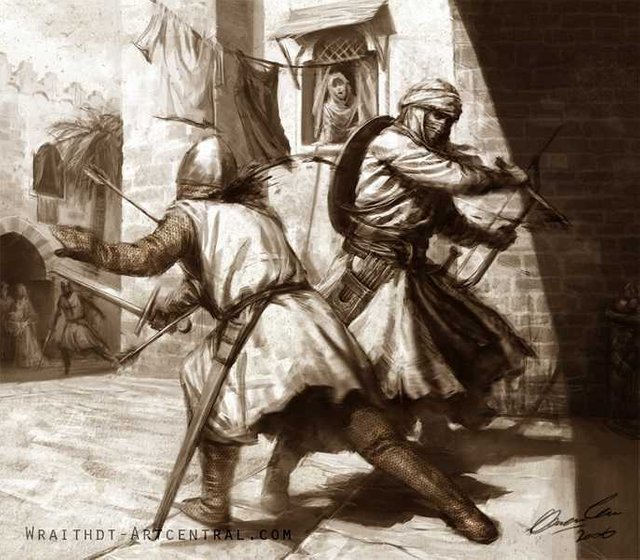
Trained from a young age to do as their leader commanded, these disciplined assassins were called the fida’yin, ’someone who sacrifices’ – in modern language the Fedayeen. These shadowy men would strike at their target anywhere and at any time, often spending months or years undercover building relationships before lashing out. They were formed by the intelligent and well-spoken Hassan-ibn-Sabbah, born around 1050AD, whose skills were spotted by Ismaili leaders who sent him to Cairo for additional teachings. He studied under the religious leadership there for three years before returning to Iran and starting his effort of converting the local populations.
This effort to convert the people brought him under focus from the local authorities and so Hassan sought refuge, he wanted a base in the mountains. In 1088 he found what he was looking for, a Justanid fort in the mountains that had only a narrow path to it that could be defended with but a few men. The Justanids were a weak ruling family of that area and vassals to the Seljuk. He and a few of his disciples spent two years converting believers in the local villages, sending some of the young men he had converted to infiltrate the garrison as soldiers.
When it was reported that nearly everyone inside was a believer, under disguise he walked in on September 4th, 1090 and told the commander that he no longer was in charge. The commander, whose name was Mahdi, ordered his guards to arrest Hassan, but they no longer followed Mahdi’s orders. Hassan did not kill him though, he gave Mahdi a check for 3,000 gold dinars to be presented to an Ismaili Seljuk officer – and it was paid!
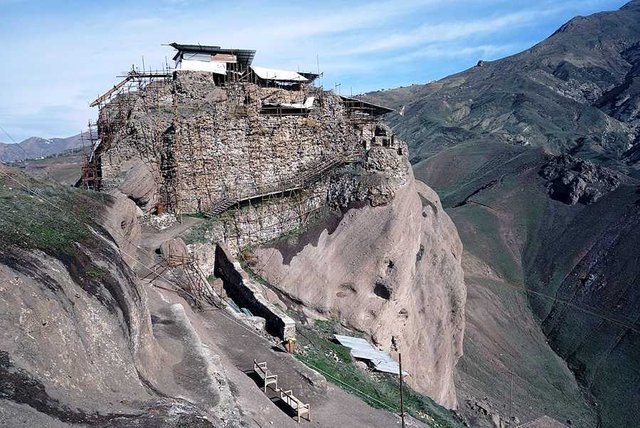
Now he had his castle, and its name was Alamut - meaning Eagle’s Teaching. It was a place he would not leave until his death 35 years later.
After the Seljuk failed to recapture the fort, Hassan turned his attention to growing his influence and part of those plans included the formation of the assassins. He was surrounded by a powerful and numerous foe, and he had but few men in comparison. So he would use the tactics that allowed him to gain the fort in the first place – converting the populace and subterfuge.
In 1092 one of Hassan’s deputies had succeeded in converting the villagers of the region called Kuhistan, and those people had sent the local garrisons fleeing. His capture of Alamut had been a splinter in the finger of the Seljuk’s, but now he had done too much to be ignored. Malik Shah, the Seljuk ruler sent armies to recapture both Alamut and Kuhistan, laying siege to Alamut in the summer of 1092.
This was nearly the end of the fledgling assassins, he had only 5 or 6 dozen men at the fort and the food supplies were already extremely low. Luckily he managed to send a message 150 miles to one of his missionaries that was converting people. That missionary led 300 armed people with food to Alamut, where they were able to get past the Seljuk forces and resupply the garrison. Later, those combined forces were able to launch a midnight raid against the besiegers and send them running.
Now it was time for his assassins to strike. He had already sent an Ismaili named Bu-Tahir on a mission to gain access to the court of the Sultan. He was to kill Vizier Nizam al-Mulk, the most influential advisor to the Sultan and some say the de-facto ruler of the Seljuk’s as the Sultan nearly always did what he said to do. On the 14th of October, 1092 Bu-Tahir was dressed as a Dervish priest as he approached the Vizier being carried in a litter with a message, as the Vizier leaned over to take it Bu-Tahir stabbed him with a dagger killing the man. His guards then killed Bu-Tahir.
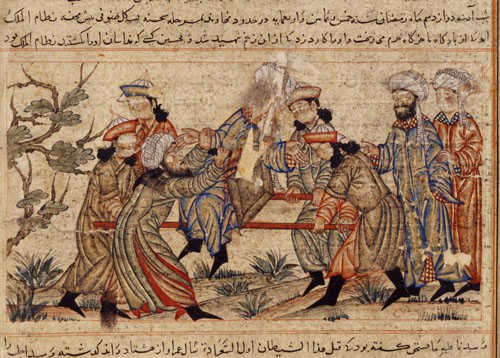
The order of the assassins had made themselves known.
Hassan organized his new order as such:
- Shiek-al-Jebal: The Grand Master – known as the ’Old Man of the Mountain’
- Dai-al-Kirbal: Three Viceroys
- Dais: Provincial rulers
- Refiks: Ismaili Imams
- Fida’yin: The Devoted or Sacrificers
- Lasiks: Novices
- Batinee: Common laborers and mechanics affiliated with the assassins
Now the common meaning of assassins is said to come from ’hash-ishiyun’ meaning hashish smokers. This was misunderstood by western travelers as assassin. It seems to come from the writing of Marco Polo.
"The Old Man kept at his court such boys of twelve years old as seemed to him destined to become courageous men. When the Old Man sent them into the garden in groups of four, ten or twenty, he gave them hashish to drink. They slept for three days, then they were carried sleeping into the garden where he had them awakened."
“When these young men woke, and found themselves in the garden with all these marvelous things, they truly believed themselves to be in paradise. And these damsels were always with them in songs and great entertainments; they; received everything they asked for, so that they would never have left that garden of their own will."
"And when the Old Man wished to kill someone, he would take him and say: 'Go and do this thing. I do this because I want to make you return to paradise'. And the assassins go and perform the deed willingly." - Marco Polo - on his visit to Alamut in 1273
Other than that there seems to be little that indicated the assassins used hashish. Some scholars state texts say that Hassan called his Dais asas'iyun, meaning foundation of the faith. Whichever it was, it was a word that was feared for almost the next 200 years. This small band of men would go on to kill 50 opposing leaders until Hassan’s death in 1124.
Hassan was able to nurture a belief in the cause similar to the terrorists of today, they did not fear losing their life to take out the target they were ordered to. In fact, the assassinations were normally carried out in the open and the assassin did not try to flee. It showed the assassins did not fear death and would do what it took to kill their target. This grew the fear that the people opposed to the Ismaili’s were never safe, no matter how well protected they tried to keep themselves.
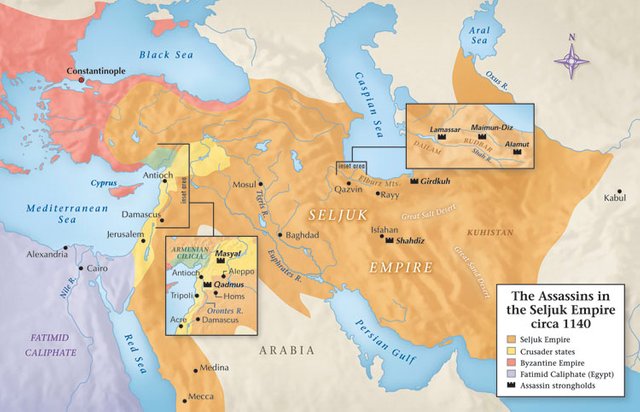
A month after Bu-Tahir killed the Vizier, the Sultan died of an illness and there was 12 years of civil war as various powers claimed to be the new Sultan. During this struggle, Hassan managed to expand his influence and gained multiple mountain fortresses. Although he lost most of them after the civil struggle was over and the new sultan, named Tapar, reclaimed them with his armies between 1107-1118.
Hassan realized that he would not be allowed to expand openly like he had been, so he focused on strengthening security and subterfuge of the order. After his death in 1124 his body was enshrined in the Rudbar Mountains near Alamut.
Assassinations
In 1126 two fida’yin were working in the stable of a Seljuk Vizier that had launched attacks against the Ismaili’s near Alamut. When he came in to choose two horses to give to the Sultan as a gift, they stabbed and killed him.
In 1129 two fida’yin were sent to the court of a Turkish emir who had slaughtered thousands of Ismaili’s in Damascus. They worked as his bodyguard for two years until they saw their chance and stabbed him, he died shortly after.
In 1192 they performed their most famous assassination, Conrad of Montferrat – a northern Italian leader who was said to be as skilled as Saladin. Two fida’yin posed as Christian monks long enough to gain his trust before they plunged their daggers into his body. Conrad was about to be voted the King of Jerusalem, much to the dismay of Richard the Lionheart who wanted someone else to rule. One of the assassins was tortured and confessed that Richard had bought their services.
This was famously used after they tried and failed to kill Saladin. Saladin turned his armies against the assassins after that, but they left the dagger and note beside him one night and soon after a truce was made between the two leaders.
As the order passed from Grand Master to Grand Master, they used these tactics to gain advantages such as being able to tax the land they owned and tax travelers as well as special grants and licenses to become wealthy.
Slowly growing in power and forming a stronghold in Syrian territory, they reached the peak of their power around 1220 under their leader Ala al-Din Muhammad. They had strong communities from Turkey to India, and a total membership in the tens of thousands, but this was right at the time a new enemy came swooping in - the Mongols.
Between 1219 and 1231 the Mongols captured the cities of the areas in and near assassin lands. In the 1250’s the Mongols made a concerted effort to get rid of the assassins once and for all, thinking that they must kill all of them to stop any retribution. In the east the Mongols captured Alamut in 1256 and the last assassin fortress in 1270, killing all. In the west the Mameluks had vassalized the remaining assassins in Syria and made them release their fortresses in 1271 and 1273.
While the Syrian assassins lived on in communities, without their fortresses they slowly faded out as an organization.
While it might seem that they were violent criminals, it could be said that their form of selected killings and intimidation was the most civilized action of the sort. They rarely focused on anyone less than the person directly responsible, and by targeting the leaders they got their point across with the least amount of bloodshed.
They would probably be called terrorists today by the ones that rule over us. But I think they would have looked at the tactics employed by modern day terrorists with disdain at the loss of innocent life. I believe it is a far better situation to have the leaders fearing for their own lives when they make decisions, and this is what the assassins achieved.
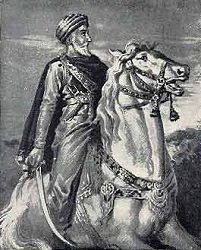
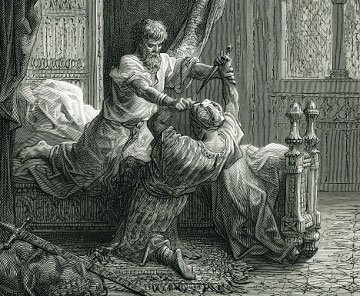
asas'iyun as foundation of the faith makes a lot more sense than hashish'in, but it's not as a good story.
The moral here is a damn good point. Assassination of the guilty individual is a much more moral approach than terror against masses of the innocent...especially when the guilty individual is transgressing against the morality of his own society.
A good story often is the one that gets spread around rather than the factual one. Who knows if they did what someone told Marco Polo they did or not. His visit was 17 years after the fall of Alamut, and the Mongols had killed all the assassins they came across.
Yea, about only going after the leaders - its like that story about wars just being settled by having the leader from each side fight it out 1v1. Saves a lot of trouble.
The sad thing is not that might makes right, but that might makes policy
Assassination of leaders provides a balance in might.
There is another angle on this line:
The obligation of subjects to the sovereign is understood to last as long, and no longer, than the power lasteth by which he is able to protect them.
Thomas Hobbes, “Leviathan”
That obligation can also be looked at as rule of law; when the rulers no longer abide by that, they should have no expectation thart the "ruled" will abide by law either.
I think there is a blog post or two following from that ;>
I think a post from you on that would be well received.
I've got something I've been holding back on Athens, Tennessee..I haven't been able to tone it down yet that I might morph that idea into.
https://en.wikipedia.org/wiki/McMinn_County_War
Not quite in line with the assassin's war concept, but definitely in line with Hobbes
What Happened In Athens, Tennessee, and Why Does It Matter Now?
I remember that there was a libertarian who suggested an "Assassin's Market" for on the basis of controlling political leaders, but I can't think of his name now. IIRC, he went to jail for some reason.
What an incredibly detailed and well structured post! They're one group I wouldn't want to mess with!
You just keep getting better and better, @getonthetrain. Unbelievably impressive. :)
Keep on doing it, bro! :)
Thank you @ezzy, I believe the story you posted today was even more impressive!
Great post! I learned a lot by reading :)
And thank you for reading and leaving a nice comment! :D